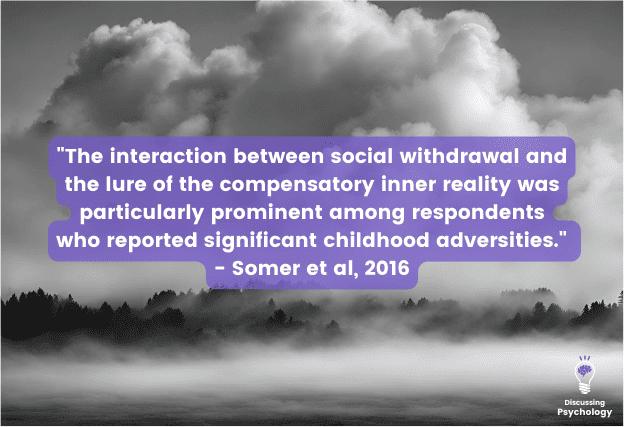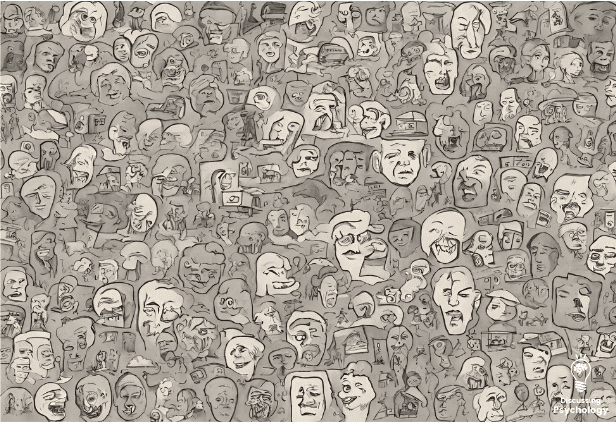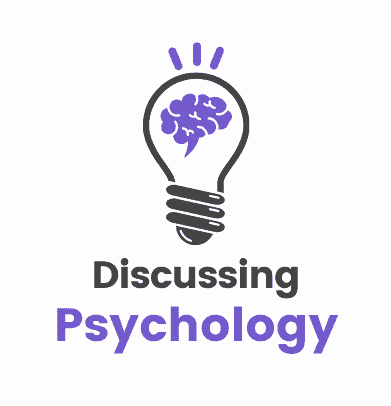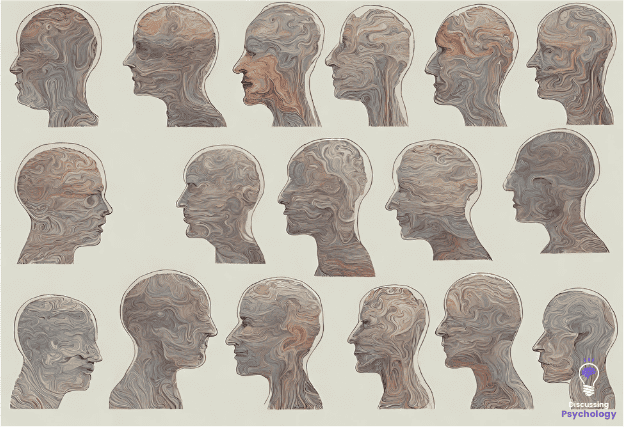What occurs in your mind during maladaptive daydreaming (MD)? Is it merely an extended, vivid form of imagination?
Or does it represent a potentially dangerous detachment from reality and a manifestation of underlying issues?
Increasing numbers of people are concerned their maladaptive daydreaming might be a form of pathological dissociation.
But does science back this theory? Let’s take a closer look below.
Is maladaptive daydreaming a form of dissociation?
Maladaptive daydreaming, like all daydreaming, would be considered a type of dissociation. But this isn’t necessarily a sign of something wrong with your brain.
Dissociation is something healthy individuals experience daily, and there’s currently no clear link between MD and mental health conditions where the ability to tell fantasy from reality breaks down.
Understanding dissociation is crucial in grasping the mechanics of maladaptive daydreaming. Dissociation entails the segregation of mental functions that would typically be experienced together.
When your focus and awareness typically engage with the present environment, but your thoughts begin to drift beyond immediate surroundings, it constitutes as a form of dissociation.
So where do we draw the line for dissociation being ‘normal’ vs an impairment?
Daydreaming as non-pathological dissociation
Daydreaming is considered a form of non-pathological dissociation: it involves a split between our attention and our sensory experience, but in a way that’s harmless and easy to snap out of.
Other forms of non-pathological dissociation include:
- Recalling past events
- Imagining possible future situations
- Getting caught up in your own thoughts or stream of consciousness
- Becoming so engrossed in an activity that you lost track of time and the rest of the world around you.
Most of us experience these forms of dissociation on a regular basis without any adverse effects.
The dissociation experienced as part of MD is no different: a bit more vivid and enduring, perhaps, but no different in principle to wondering what’s on the lunch menu or getting caught up in a TV show.
Non-pathological but still maladaptive
So if the dissociation in maladaptive daydreaming is non-pathological, why is MD considered a harmful mental health condition?
The answer lies not in the brain activity that happens while you daydream, but in the impact it has on the rest of your life.
Daydreaming in and of itself is a harmless and even an enjoyable experience, but it has the potential to become an unhealthy coping strategy.
When we experience stress, we naturally try to find ways to feel better. Going for a quick walk outside, listening to calming music, eating snacks, and grabbing a beer would all be examples.
If we experience a great deal of stress and constantly react to it in the same way; over time, however, it can become an unhealthy habit.

There’s nothing particularly wrong with reaching for your favorite comfort food when you get home from a tough day, but if this is your only way of coping with stress, it becomes a problem.
The same principle applies to MD. Most people who call themselves maladaptive daydreamers report using it as a way to escape from or lessen negative emotions like stress, anxiety, or loneliness.
While the occasional dip into a fantasy world would be of little concern, over time, if you repeatedly use fantasy as your coping method, it becomes a compulsion that takes on a life of its own.
MD begins to take up hours and hours of your day, leading to added stress and worry over the inability to control your own thoughts.
It’s this addictive, all-consuming aspect of MD that is considered maladaptive, not the act of dissociation.
Pathological dissociation
So we’ve talked about non-pathological dissociation.
At the other end of the spectrum, we have dissociative disorders, i.e., serious mental health conditions in which dissociation between different parts of your mental processing occurs beyond your ability to control.
The three main forms of dissociative disorder listed in the DSM-V are:
- Dissociative amnesia: Difficulty or inability to recall parts of your life, particularly traumatic events.
- Depersonalization: Feeling detached from your thoughts and experiences, as if they are not really happening or you yourself are not real.
- Dissociative identity disorder: Shifting between one or more different identities or personalities, often with no ability to control or recall what other identities say and do.

Is there a link between these disorders and MD? Well, yes and no.
Research shows that the comorbidity rate between maladaptive daydreaming and dissociative disorders sits at almost 13%.
That’s a small but significant overlap, hinting that the two conditions are possibly related.
However, the crucial difference is that in MD, dissociation is a conscious choice: people with MD want to daydream and voluntarily choose to do so.
Dissociative disorders differ from MD in that separation from reality occurs outside the sufferer’s control and awareness.
Given the very different nature of the two conditions, it seems likely that any levels of comorbidity are due to shared risk factors and past experiences that lead to both MD and dissociative disorders.
Childhood trauma would be a prime example of an experience that may lead to the development of either or both disorders.
In Summary
Ultimately the ability to direct our attention to places outside of our immediate surroundings is essential for helping us plan future actions and make sense of past experiences.
It’s also vital in keeping us motivated and hopeful during hard times by enabling us to picture how things might one day be better.
So, while dissociation is an important part of some serious mental health disorders, it’s also a core part of what makes us human.
- American Psychiatric Association. (2013). Diagnostic and statistical manual of mental disorders (5th ed.). https://doi.org/10.1176/appi.books.9780890425596
- Butler, L. (2006). Normative dissociation. Psychiatric Clinics of North America, 29(1), 45–62. https://doi.org/10.1016/j.psc.2005.10.004
- Ferrante, E., Marino, A., Guglielmucci, F., & Schimmenti, A. (2022). The mediating role of dissociation and shame in the relationship between emotional trauma and maladaptive daydreaming. Psychology of Consciousness: Theory, Research, and Practice, 9(1), 27–39. https://doi.org/10.1037/cns0000253
- Somer, E. (2018). Maladaptive daydreaming: Ontological analysis, treatment rationale; a pilot case report. Frontiers in the Psychotherapy of Trauma and Dissociation, 1, 1–22. https://www.researchgate.net/publication/322152657
- Somer, E., Somer, L., & Jopp, D. (2016). Childhood antecedents and maintaining factors in maladaptive daydreaming. Journal of Nervous and Mental Disease, 204(6), 471–478. https://doi.org/10.1097/nmd.0000000000000507
- Somer, E., Soffer-Dudek, N., & Ross, C. (2017). The comorbidity of daydreaming disorder (maladaptive daydreaming). Journal of Nervous and Mental Disease, 205(7), 525–530. https://doi.org/10.1097/nmd.0000000000000685

